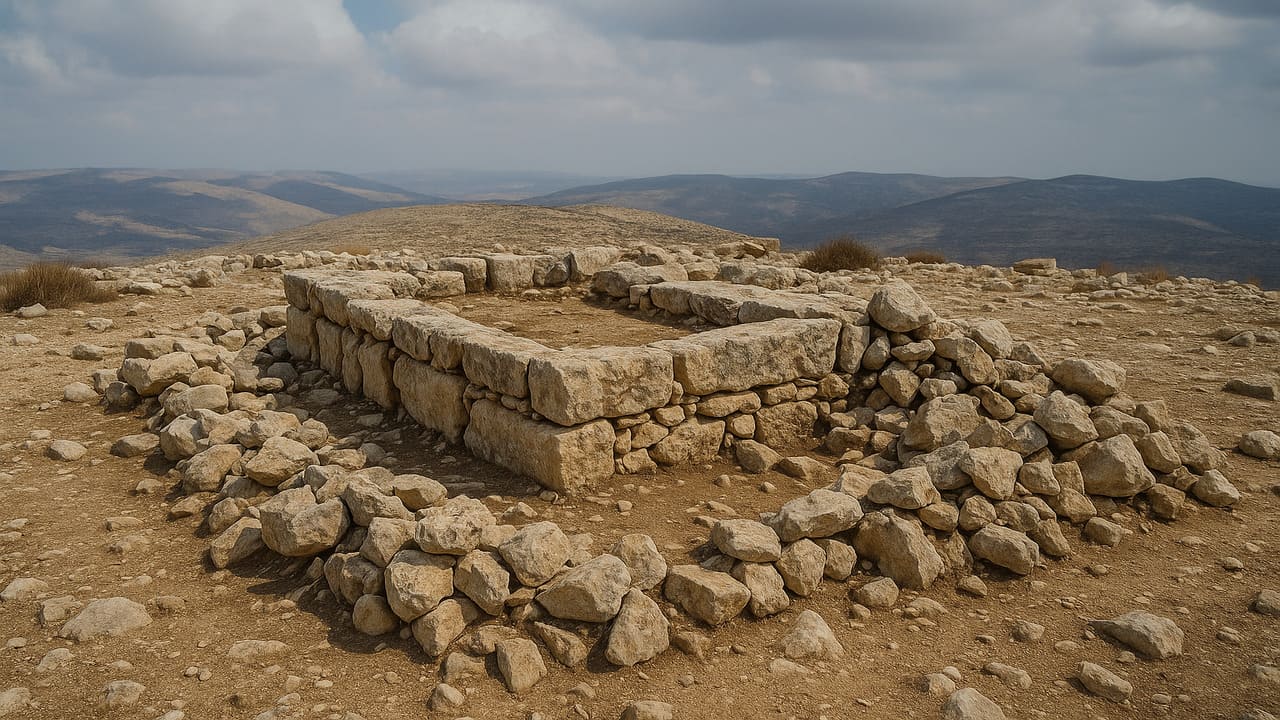
Thorn Ville Church – The Mount Ebal has long held a place of intrigue for biblical scholars, archaeologists, and theologians alike. Revered in the Old Testament as the site where Joshua built an altar to the Lord after crossing into the Promised Land, this location now stands at the heart of a debate that bridges faith and science, history and interpretation.
At the center of the controversy is a rectangular stone structure unearth in the 1980s by Israeli archaeologist Adam Zertal. Locate on the northern slope of Mount Ebal, the structure was initially dismiss by some as a simple watchtower or stone heap. But Zertal proposed a bolder theory this was the very altar describe in the Book of Joshua, where the Israelites made burnt offerings and renewed their covenant with God.
Mount Ebal is first mentioned in the Bible in Deuteronomy 11:29 and plays a prominent role in Deuteronomy 27 and Joshua 8. According to the text, Moses commanded that when the Israelites entered Canaan, half the tribes would gather on Mount Gerizim to bless the people, while the other half would stand on Mount Ebal to pronounce curses. Joshua was instructed to build an altar of uncut stones on Mount Ebal and offer sacrifices in accordance with the Law of Moses.
The Book of Joshua recounts that these commands were carried out, and that Joshua inscribed the Law of God on stones and read it before the assembly. For those who take the biblical text as historical, this event marks a pivotal moment in Israelite nationhood a symbolic and literal acceptance of divine law upon entering the land.
Read More : Oregon Unveils Bold 2025–2028 Homeland Security Strategy
In 1980, during a broader archaeological survey of the region, Adam Zertal and his team discovered an unusual structure surrounded by ash, animal bones, and potsherds dating to the Late Bronze Age II and Iron Age I roughly 1200 BCE, a period consistent with the proposed time of Joshua’s conquest.
Zertal interpreted the structure as a walled platform with a ramp rather than stairs, consistent with the biblical prohibition of steps on altars in Exodus 20:26. He found remains of kosher animals (goats, sheep, cattle), and argued that the evidence suggested a cultic site used for ritual sacrifice.
He identified a secondary altar inside the main structure, along with offering installations and storage pits. For Zertal, this site was not only cultic it was the Mount Ebal altar. His findings were publish and generate excitement among conservative scholars and religious communities.
Zertal’s interpretation, however, has not gone unchallenged. Many mainstream archaeologists remain skeptical. Critics argue that while the site is clearly significant, there is insufficient evidence to definitively label it as Joshua’s altar.
Key objections include:
Furthermore, debates over the dating and stratigraphy of the site have left room for disagreement. While some agree on the approximate dating to Iron Age I, others suggest the structure may have had a different function entirely, unrelated to worship or sacrifice.
As is common in biblical archaeology, the lack of consensus reflects broader tensions between faith-based interpretation and academic skepticism.
Read More : Cracking the Code of Scripture: Biblical Archaeology Finds That Rewrite History
Beyond the academic realm, the Mount Ebal altar carries political and cultural weight. Located in the disputed territory of the West Bank, the site sits in a region where archaeology intersects with national narratives and religious identity.
In recent years, controversy reignited when reports surface that part of the site had been damaged during construction work in 2021. Israeli and Christian groups condemned the act, calling for preservation of what they consider a sacred site. The incident underscored how archaeological sites can become flashpoints in broader cultural and religious conflicts.
The structure on Mount Ebal, regardless of its origin, now holds symbolic value as a place of memory, heritage, and contested meaning.
Rather than ending with a typical conclusion, it’s worth exploring a forward-looking theme: how emerging technologies are shaping the future of biblical archaeology, including Mount Ebal.
In 2022, a breakthrough came when researchers claimed to have discovered a tiny folded lead tablet at the Mount Ebal site, potentially inscribed with early Hebrew script. The object, found during re-analysis of Zertal’s excavation dump, allegedly contained a curse formula reminiscent of Deuteronomy’s covenantal language. If authenticated, the tablet could represent the oldest Hebrew inscription ever found, and would offer unprecedented insight into literacy and religious practices in early Israel.
High-resolution 3D scanning, ground-penetrating radar, and AI-enhanced image analysis are also being employe to revisit old sites with fresh perspectives. These tools may provide new data that either support or challenge past interpretations.
Mount Ebal, once a silent hilltop in ancient Canaan, continues to speak through stone, soil, and now digital technology inviting each generation to dig deeper in its search for truth.
Thornville Church - Your Source for Biblical Inspiration - Historians now highlight how women in early church shaped theology, leadership,…
Thornville Church - Your Source for Biblical Inspiration highlights how church orientation toward east shapes Christian worship, architectural symbolism, and…
Thornville Church - Your Source for Biblical Inspiration reports that recent necropolis discoveries at Colossae are reshaping how scholars read…
Thornville Church - Your Source for Biblical Inspiration highlights how oldest church sites 2025 continue to stand as living testaments…
Thornville Church - Your Source for Biblical Inspiration highlights how ancient churches and sites continue to attract pilgrims, travelers, and…
Thornville Church - Your Source for Biblical Inspiration Growing schedules push many parents to seek simple guidance, and daily bible…